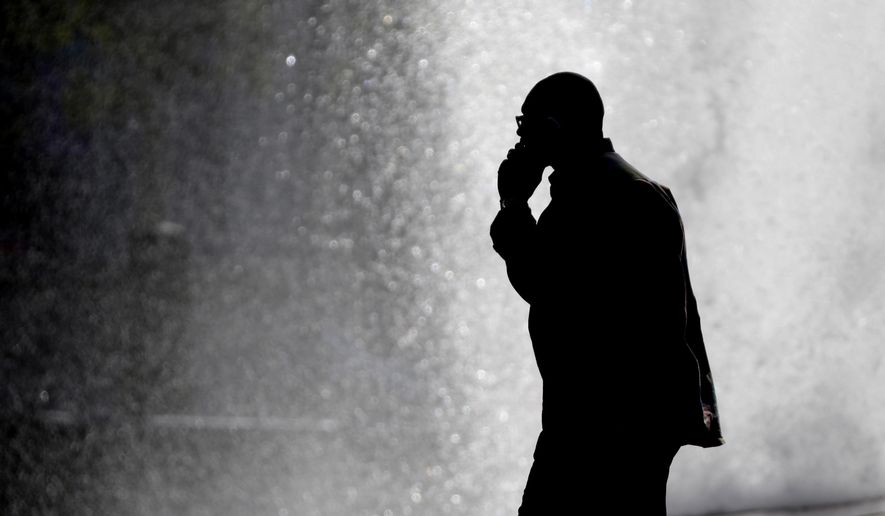A new study attributes part of the decline in the U.S. urban homicide rate over the past 30 years to the rise of cellphone usage in the drug trade.
The nonprofit National Bureau of Economic Research says that cellphones have led to fewer urban slayings by “replacing in-person drug deals with phone calls and text messages,” diminishing the importance of territory and the need to violently defend it.
“Before cellphones, open street sales was a common way for end users to buy illicit drugs,” the research group contends in a working paper. “At least part of the transaction had to be open because buyers and sellers needed to physically spot each other. … The cellphone changed the reliance on such locations (’turf’).”
The 49-page study has not been peer-reviewed or publicly published, but it is stirring debate among criminologists and sociologists. The Washington Times obtained a copy from the National Bureau of Economic Research, which is based in Cambridge, Massachusetts.
Conducted by Columbia University economist Lena Edlund and Cecilia Machado of the Getulio Vargas Foundation, the research comes amid uncertainty over the direction of public policy aimed at lowering homicide rates and policing gang territories, especially in Chicago, where the homicide rate has been increasing.
The overall violent crime rate — including homicides — fell 49% from 1993 to 2017, according to a Pew Research Center analysis of FBI statistics. The FBI reported in February a 6.7% decline in the homicide rate during the first half of 2018.
Ms. Edlund and Ms. Machado’s research explores the idea that turf-based drug sales in the 1980s prompted gangs to defend their territory to control neighborhood blocks and maintain high profits.
From 1990 to 2000, a surge in cellphone usage spurred the construction of cell towers across the urban landscape. During that same period, the homicide rate in urban areas fell from 17.3 per 100,000 people to 9.5 per 100,000, the research notes.
The researchers proffer that cellphone penetration disrupted the link between turf and drug sales, which could explain as much as 19% to 29% of the homicide rate drop from 1990 to 2000 — a decline they found to be even more pronounced among black and Hispanic populations.
“A move away from turf-based dealing may have reduced the ability to cartelize drug sales, dented profits, and dulled the allure of gang life. Simply put, as the turf lost its value, so did the turf war,” they wrote.
While homicide rates have spiked in cities such as Chicago, Dallas and Jacksonville, Florida, data from the FBI’s annual Uniform Crime Report and the Bureau of Justice Statistics annual survey show that violent crime across the country has fallen sharply since 1990. However, sociologists and demographers have been at a loss to explain the reasons for the decline, analysts say.
Ms. Edlund and Ms. Machado’s study is the latest to examine links between cellphones and the decline in violent crime. Others have considered the possibility that the proliferation of mobile phones with cameras has led to less violence because perpetrators fear photographic evidence of their crimes.
Alex Piquero, a criminology professor at the University of Texas at Dallas, has studied the impact of cellphone-ownership rates on property crime.
Commenting on the National Bureau of Economic Research study, he told The Times that an obstacle to such macro-level research — which pairs major sets of data such as cellphone penetration and homicide rates — is that it lacks local context.
Local context could involve interviewing drug dealers from the 1990s to learn how they think cellphones might have affected their enterprises, especially their ability to assess risks and rewards.
“While it is very plausible that turf battles were real, drug sales have now moved online and cellphones have allowed new markets to open up on Twitter and Instagram,” Mr. Piquero said. “The cellphone could have caused a dip in territory battles, but now it has opened up new territory for dealers to access.”
• Dan Boylan can be reached at dboylan@washingtontimes.com.




Please read our comment policy before commenting.